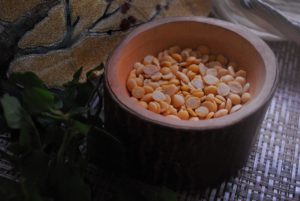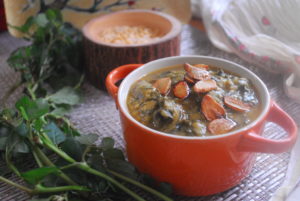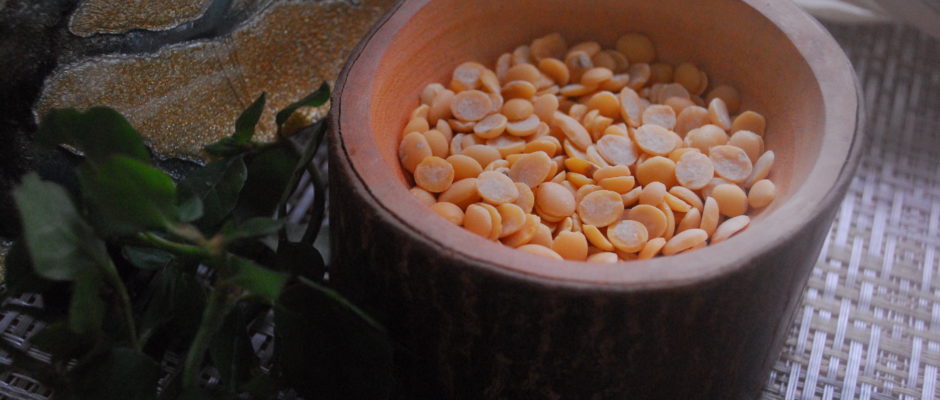Simplicity Coimbatore ,Avara paruppu

The traditional diet in every part of the Indian sub-continent consists of a rich cache of lentils and pulses.India is home to hundreds of varieties of paruppu and dhal in each region. They are meant to be consumed according to the season and the manner in which the dish is cooked.
Despite the store shelves and markets offering a wide colourful range of pulses ,studies show that urban consumers have brought down lentil intake to a few well known varieties like tuvar , kabuli channa,rajma,urad and masoor. If we choose to remind or re-educate ourselves, the kinds of lentils available are truly vast.
A month ago ,when I had written about enjoying the simple sola sappadu ,the focus was primarily on the solam. (millet)The taste of this flavourful grain was further enhanced by a generous helping of what we call annapappu (telugu). In Tamil it is referred to as avara paruppu. It is sold in dried form,split. The avara paruppu is thin ,slightly oval in shape and a pale yellow colour.

The avara paruppu has a distinct taste which is largely acquired. Eaten from a young age most folks tend to enjoy the unique flavour and aroma. Usually it is cooked in a simple manner. Cooked with turmeric and chilli powder with some tomatoes for flavour,it is light and comforting. Another characteristic of this avara paruppu is that it doesn’t give rise to bloating or flatulence when digested. Many a time it is this lentil which is first introduced to toddlers.
When I realised that we weren’t eating it as often as we do the green gram , horse gram , red lobia etc,I quickly made a mental note to add it to our regular diet.
The avara paruppu is easily available everywhere in Coimbatore. However I did not have much knowledge regarding it’s cultivation,adaptability to other cuisines,nutritional benefits etc. Since it is a part of our traditional diet I was certain that it must be healthy.
I took a few days to do a bit of research and came across a lot of interesting information which I thought needed to be shared. Very often we take our own produce for granted and obsess about that which is not easily available locally.
The avara paruppu seems to belong to the broad bean family.The botanical name is Vicia faba . What I further discovered is that there are so many categories under this family which look similar when fresh but can also be consumed in different ways depending on which part of the world it is cooked in.
The avara paruppu also resembles the dried and peeled Ful hamam beans. In the Mediterranean region a dish called ‘ful’ is made by using the fresh beans or dried which then needs soaking. When the dried bean is peeled it looks exactly like the avara paruppu but it is not used to make ful at this stage.
Another resemblance to the avara paruppu is the Parkia speciosa known in Asia (Malaysia,Singapore) as the petai or stink bean. In Asian countries this bean is eaten in it’s fresh state. I have eaten eaten it several times and enjoyed the unusual bitter almost umami flavour. I thought it was familiar tasting but never once did I equate it to the taste of the annapappu of my growing up years!
Now when I think back there is a lot of similarity in base flavour between the cooked avara paruppu and the petai bean.
We cooked the avara paruppu for lunch this week with wild greens that sprout abundantly during the monsoons. The purslane (kattu keerai) was vibrant and green and paired very well with the avara paruppu. We added coarsely pounded ginger, garlic, cumin and coriander powder along with turmeric powder and green chillies. After a few whistles in the pressure cooker, it was transferred to a clay pot where we gave it a good mashing with the wooden pestle. A final tempering of asafoetida (perungayam) and garlic in a tablespoon of hot ghee resulted in a fusion of Indian flavours which seemed like a blend of the South and the North.

Indian food comprises of many textures. The mashed paruppu (dhal) was creamy,the strands of greens added a bite and the roasted garlic a smokey chewiness ! The only process that took time was the cleaning of the greens but the results and health benefits are more than worth it.



No comments yet.